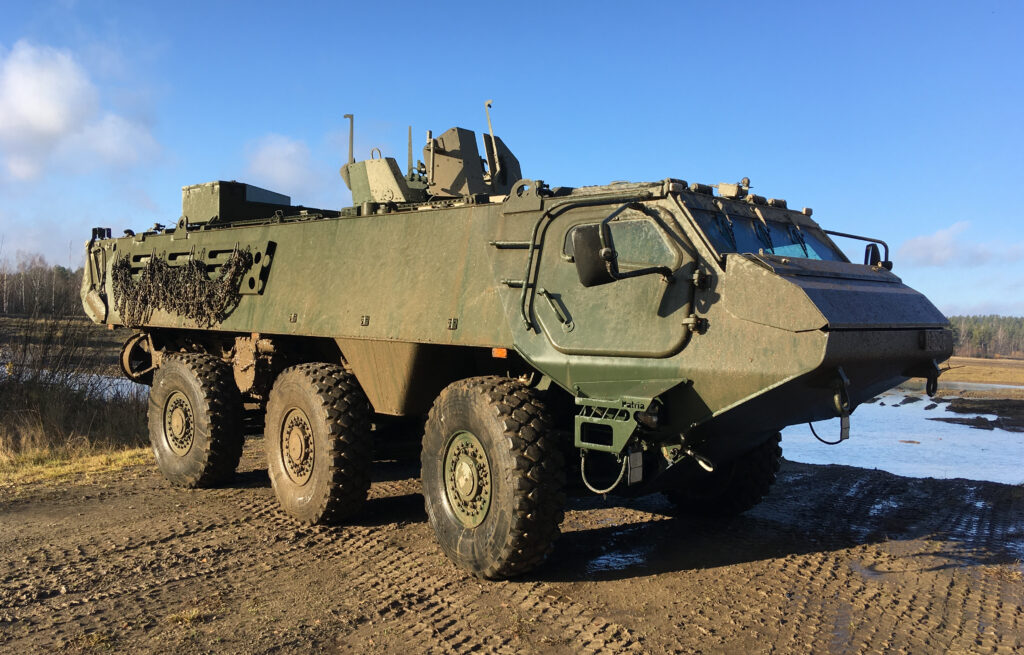In response to escalating geopolitical tensions and a shifting global security landscape, the European Union (EU) has unveiled an ambitious plan to bolster its defence capabilities. Dubbed the “ReArm Europe” initiative, this strategy aims to mobilize up to €800 billion by 2030 to enhance Europe’s military readiness and reduce reliance on external allies. The policy aims to source 65 percent of defence equipment from EU, Norwegian, or Ukrainian firms.
The ReArm Europe plan, announced by European Commission President Ursula von der Leyen on 4 March 2025, outlines a comprehensive approach to strengthening the EU’s defence infrastructure. The initiative comprises several key components:
- Fiscal Flexibility: Suspension of EU budgetary constraints to allow member states to increase defence spending, potentially unlocking €650 billion over four years.
- Defence Loans: Provision of €150 billion in loans for joint defence projects, including air and missile defence systems.
- Budget Repurposing: Redirecting existing EU funds, such as cohesion funds, towards defence investments.
- European Investment Bank (EIB) Role: Lifting restrictions to enable the EIB to support defence-related projects.
- Mobilizing Private Capital: Establishing mechanisms to attract private investment into the defence sector.
As of March 2025, the European Council has endorsed the white paper associated with the ReArm Europe plan, signalling political commitment to its objectives. However, the implementation phase is still in its infancy, with detailed frameworks and timelines under development.
Buy European
While the initiative has garnered significant support, it has also sparked debates and highlighted challenges among EU member states. Northern and eastern EU countries advocate for a rapid military buildup to deter Russian aggression. In contrast, southern and western nations express concerns about the scale of militarization and its financial implications. For instance, Spanish Prime Minister Pedro Sánchez emphasizes the importance of border controls and warns against an overly militarized EU.
Countries with high debt levels, such as Italy and Greece, are apprehensive about the financial burden of increased defence spending. Italian Prime Minister Giorgia Meloni has described the plans as overambitious and potentially unfeasible.
The initiative’s “Buy European” policy aims to source 65 percent of defence equipment from EU, Norwegian, or Ukrainian firms, potentially limiting opportunities for non-EU companies. This has raised concerns about competitiveness and innovation within the European defence industry.
Varied International Reactions
The ReArm Europe initiative has elicited varied responses from international actors. The U.S. has expressed reservations about the EU’s move towards defence autonomy, viewing it as a potential shift away from NATO-centric security arrangements. The exclusion of U.S. and UK firms from the EU’s €150 billion defence investment lending scheme, unless they sign a security partnership with the EU, has been a point of contention. This development underscores the evolving dynamics of transatlantic defence cooperation.
While official statements from Moscow are limited, Russian media outlets have portrayed the EU’s rearmament plans as a provocative escalation. They suggest that such measures could heighten tensions and undermine regional stability. This perspective aligns with Russia’s broader narrative that portrays NATO and EU military enhancements as threats to its security.
Impact on the European Defence Industry
The ReArm Europe initiative is anticipated to have several profound effects on the European defence industry:
- Enhanced Production Capacity: The substantial investment will likely lead to the expansion of production facilities and the development of new manufacturing capabilities, enabling European companies to meet increased demand and reduce production timelines.
- Technological Innovation: Increased funding for research and development is expected to spur innovation, leading to the creation of advanced defence technologies and systems. This focus on innovation will enhance the competitiveness of European defence firms on the global stage.
- Supply Chain Strengthening: The emphasis on sourcing from within the EU will encourage the development of a more resilient and integrated supply chain, reducing dependencies on non-European suppliers and enhancing strategic autonomy.
- Workforce Development: The surge in defence projects is likely to create numerous employment opportunities, necessitating investments in workforce training and development to ensure a skilled labour pool capable of supporting the industry’s growth.
While the initiative presents significant opportunities, several challenges must be addressed. Ensuring cohesive and efficient collaboration among EU member states in procurement and standardization will be essential to maximize the effectiveness of the initiative. While fostering innovation is crucial, maintaining interoperability and standardization across member states’ armed forces will require careful planning and coordination.
The Big Will Get Bigger
Home to major defence contractors such as Dassault Aviation, Thales Group, and Naval Group, France stands to gain substantially from this initiative. Dassault Aviation, renowned for its Rafale fighter jets, and Thales Group, specializing in aerospace and defence electronics, are likely to see increased demand for their products and services.
With industry giants like Rheinmetall AG and Krauss-Maffei Wegmann, Germany’s defence sector is expected to experience significant growth. Rheinmetall, known for its expertise in military vehicles and munitions, may see increased orders for its advanced armoured vehicles and weaponry. Leonardo S.p.A., a leading Italian aerospace and defence company, is poised to benefit from the surge in defence spending. The company’s diverse portfolio, including helicopters, aircraft, and defence electronics, aligns well with the EU’s investment priorities.
Indra Sistemas, a Spanish information technology and defence systems company, could see opportunities in areas such as cybersecurity and command-and-control systems, which are critical components of modern defence strategies.
Ten Northern Defence Companies Expected to Benefit
- Kongsberg Gruppen (Norway): Kongsberg is a leading defence contractor specializing in command and control systems, weapons control, communications, missiles, and surveillance. The company has a history of collaborating on international defence projects and is well-positioned to secure contracts under the EU’s investment plan.
- Patria (Finland): Patria is a defence and aerospace company known for its armoured vehicles, mortar systems, and aircraft maintenance services. The company has been involved in joint development programmes aimed at strengthening European defence capabilities, such as the Common Armoured Vehicle System (CAVS) and FAMOUS vehicle programmes.
- Saab AB (Sweden): While based in Sweden, Saab’s influence extends across the Nordic region. The company produces a wide range of defence products, including the Gripen fighter jet and GlobalEye surveillance aircraft. Saab has been advocating for Nordic countries to adopt its GlobalEye surveillance aircraft for joint patrols.
- Nammo (Norway/Finland): Nammo is a Nordic defence company specializing in ammunition and rocket motors. With facilities in both Norway and Finland plus soon in Denmark, Nammo is poised to benefit from increased demand for munitions and related technologies.
- Terma A/S (Denmark): Terma provides aerospace, defence, and security solutions, including radar systems, electronic warfare equipment, and aircraft self-protection systems. The company’s expertise aligns with areas prioritized in the EU’s defence investment plan, such as air and missile defence.
- Systematic A/S (Denmark): Systematic specializes in command-and-control software solutions for defence forces. Its products enhance situational awareness and decision-making, making it a valuable contributor to modern defence operations.
- Rheinmetall Nordic (Norway): A subsidiary of the German Rheinmetall Group, this branch focuses on developing and producing ammunition and weapon systems, aligning with the EU’s emphasis on strengthening artillery capabilities.
- Weibel Scientific (Denmark): Weibel is known for its advanced Doppler radar systems used in defence and aerospace applications. Its technologies are critical for surveillance and tracking, key components of modern defence strategies.
- Milrem Robotics (Estonia): As a leading robotics and autonomous systems developer in the Baltic region, Milrem Robotics specializes in unmanned ground vehicles (UGVs) and robotic warfare solutions. The company’s innovative technologies are likely to attract investment under the EU’s defence initiative.
- Baltic Workboats (Estonia): This shipbuilding company produces various vessels, including patrol boats and fast attack crafts, which could see increased demand as EU nations seek to enhance their naval capabilities.
Read More:
- European Commission: Press statement by President von der Leyen on the defence package
- European Commission: Acting on defence to protect Europeans
- WSJ: EU Drafts ‘Massive’ Defense-Investment Plan
- Bruegel: Sustainability rules are not a block on EU defence financing, but reputational fears are
- Euronews: European Commission to propose EU-wide mechanism to pool member states’ defence orders
- European Commission: Commission unveils the White Paper for European Defence and the ReArm Europe Plan/Readiness 2030
- France24: EU chief unveils 800-billion-euro plan to ‘rearm’ Europe
- the Guardian: Ignored by Trump and menaced by Putin, the UK turns to the EU for defensive ties
- Geopolitical Monitor: Europe at a Crossroads: Promise and Perils of the ‘ReArm Europe’ Strategy
- DefenseNews: EU’s 2030 defense plan pushes for more joint spending at home
- Politico: EU slams the door on US in colossal defense plan
- Reuters: Explainer: Europe’s plans to pay for surge in defence spending
- Defense News: EU leaders green-light massive European rearmament Plan
- Fortune: With Ukraine showing the need for drones and AI, a new breed of defense company hopes to cash in on Europe’s $865 billion drive to counter Russia without America’s help
- The Guardian: ‘As real as it can get’: EU to loan €150bn for European defence from invasion
- Bild: EU will bis 2030 massiv aufrüsten
- Economic Times: ‘We can’t rely on America forever’: EU unveils €800 billion defence plan to deter Russian threat, strengthen military preparedness by 2030
- Kongsberg: KONGSBERG to deliver PROTECTOR remote weapon stations to Sweden and Finland
- Scandinavian Journal for Military Studies: Back to the Future: Nordefco’s First Decade and Prospects for the Next
- Nordics Info: Overview of Nordic defence and security cooperation
- Atlantic Council: How allied Sweden and Finland can secure Northern Europe
- CEPA: The Nordic-Baltic Region: An Example for NATO
- Carnagie Europe: Reviving Nordic Security and Defense Cooperation
- ValdaiClub: Not a United Front: How the Nordic Countries Are Promoting the Collective Security Agenda for the Baltic Sea and Arctic Regions Within NATO
- MorningStar: 7 Nordic Stocks Every Global Investor Should Own
- European Council On Foreign Relations: Northern lights: How a Nordic-Baltic coalition of the willing can do even more for Ukraine
- Patria Group: Joint development programmes strengthen European defence
- Bloonberg: Weapons-maker Patria urges Europe to coordinate on buying arms
- Financial Times: Saab urges Nordic neighbours to use spy plane touting its ‘unique capability’
- Patria Group: Joint development programmes strengthen European defence
- Wikipedia: Kongsberg Gruppen
- Wikipedia: ReArm Europe



